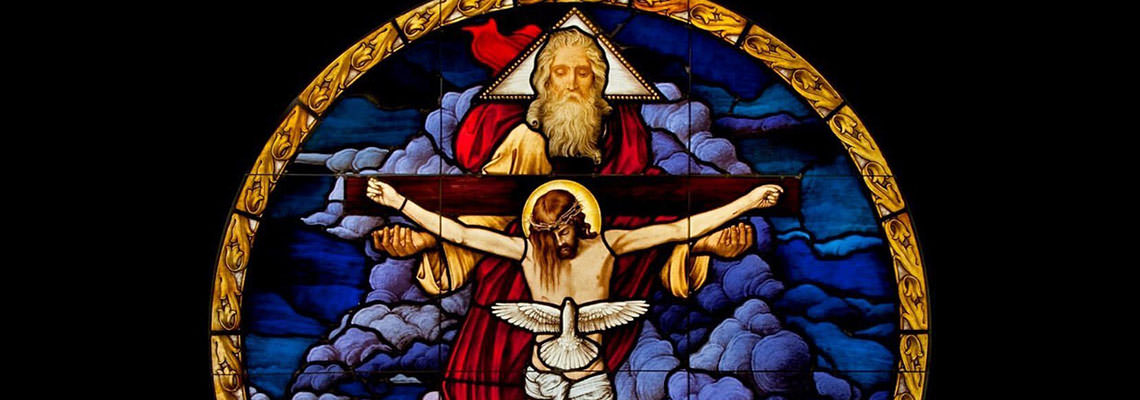Good morning, Good People!
May the Lord fill you with grace and peace on this solemnity of the Most Holy Trinity. Wishing you all a joyful and blessed feast of the Most Holy Trinity.
It is 15th June 2025. We reflect on Proverbs 8:22–31, Romans 5:1–5, and John 16:12–15.
St. Catherine of Siena profoundly explains, “You, eternal Trinity, are a deep sea: the more I enter you, the more I discover, and the more I seek.” While St. John Paul II places the Most Holy Trinity as the foundation and mystery: “The mystery of the Most Holy Trinity is the central mystery of Christian faith and life.”
From our childhood, we have all been deeply familiar with the doxology of the Trinity:
“Glory be to the Father, and to the Son, and to the Holy Spirit.
As it was in the beginning, is now, and ever shall be, world without end. Amen.”
But how many of us truly accept and believe this as the central and most fundamental mystery of our faith?
The Dogma of the Trinity—One God in Three Persons—is the very heart of Christian belief. As the Psalmist rightly proclaims: “O Lord, our God, how wonderful is your name in all the earth!” (Psalm 8:1).
The beloved Apostle of Ireland, St. Patrick, used the three-leafed shamrock to explain the Trinity to the Irish: “Just as the three leaves are distinct but part of one plant, so too are the Father, the Son, and the Holy Spirit—distinct, yet One God.”
A young monk once asked his elder, “How can I understand the Trinity?” The elder pointed to the sunrise, and said, “There you see light, heat, and radiance—three qualities, one sun. So is the Trinity—three Persons, one God—glorious and inseparable.”
St. Augustine cautions us with deep insight: “If you have understood, what you have understood is not God.”
Every prayer and act of worship begins and ends in the name of the Trinity.
Even the church bell, ringing thrice, reminds us of the Triune God—Father, Son, and Holy Spirit.
The Sign of the Cross, made over our bodies and lives, is a silent yet powerful embrace of the Divine Communion.
St. Augustine beautifully explains: “You see the Trinity if you see love:
The Father is the Lover,
The Son is the Beloved,
And the Holy Spirit is the Love shared between them.”
Indeed, the Holy Spirit is Love itself.
There is no competition but only communion in the Trinity.
The Trinity is the perfection of love—distinct yet one, united without confusion, free in mutual giving.
St. Thomas Aquinas describes, “The Father is the principle, the Son is the wisdom, and the Holy Spirit is the bond of love between them.”
In the first reading, we hear how the Wisdom of God was with Him from the beginning—God the Creator, the source of all.
Our intimacy with God is shown not only in our prayer but in how we love, forgive, and live truthfully with one another.
In the second reading, St. Paul assures us: “God’s love has been poured into our hearts through the Holy Spirit that has been given to us.” (Romans 5:5)
If we draw near to this mystery of divine life, we will begin to live lives of unity, holiness, and communion.
Though the Trinity is a mystery we cannot fully explain, it is one we can believe in, trust, and imitate.
The Holy Trinity is not a concept manufactured by human minds, but a truth revealed by God.
It is the very foundation of our Christian identity—we are baptized, blessed, and even buried in the Name of the Father, and of the Son, and of the Holy Spirit.
Let us ask ourselves:
- Are we truly proud to be Catholic, to belong to this great Mystery?
- Are we truthful, loving, and united to one another in the image of the Trinity?
- Have we forgotten this foundational identity?
Let us not divide our lives by straying from truth, love, and unity.
May we live in the image of the Triune God—faithful, united, and aflame with divine love.
May the Most Holy Trinity bless each of us and fill our hearts with truth, love, and unity.


